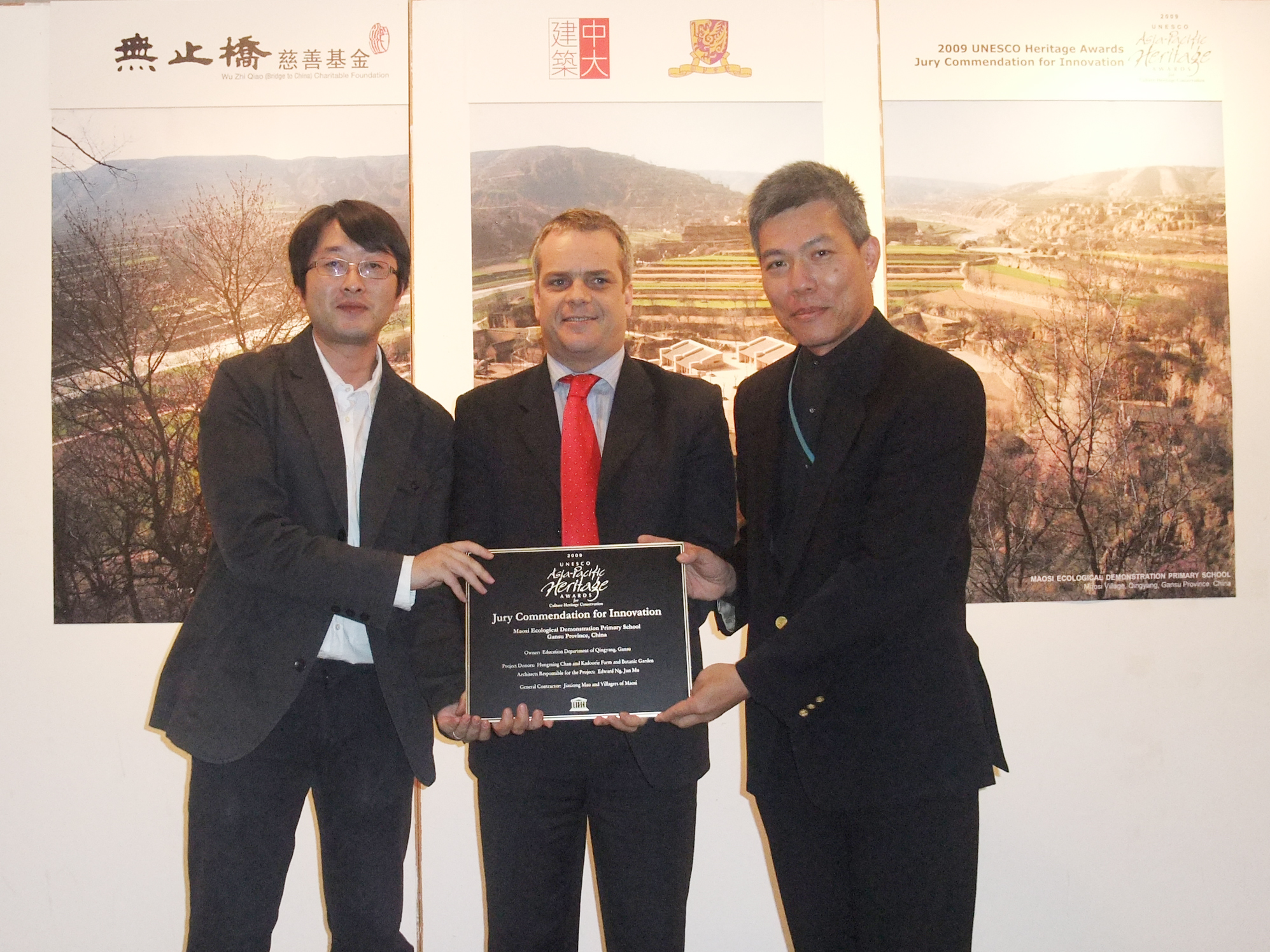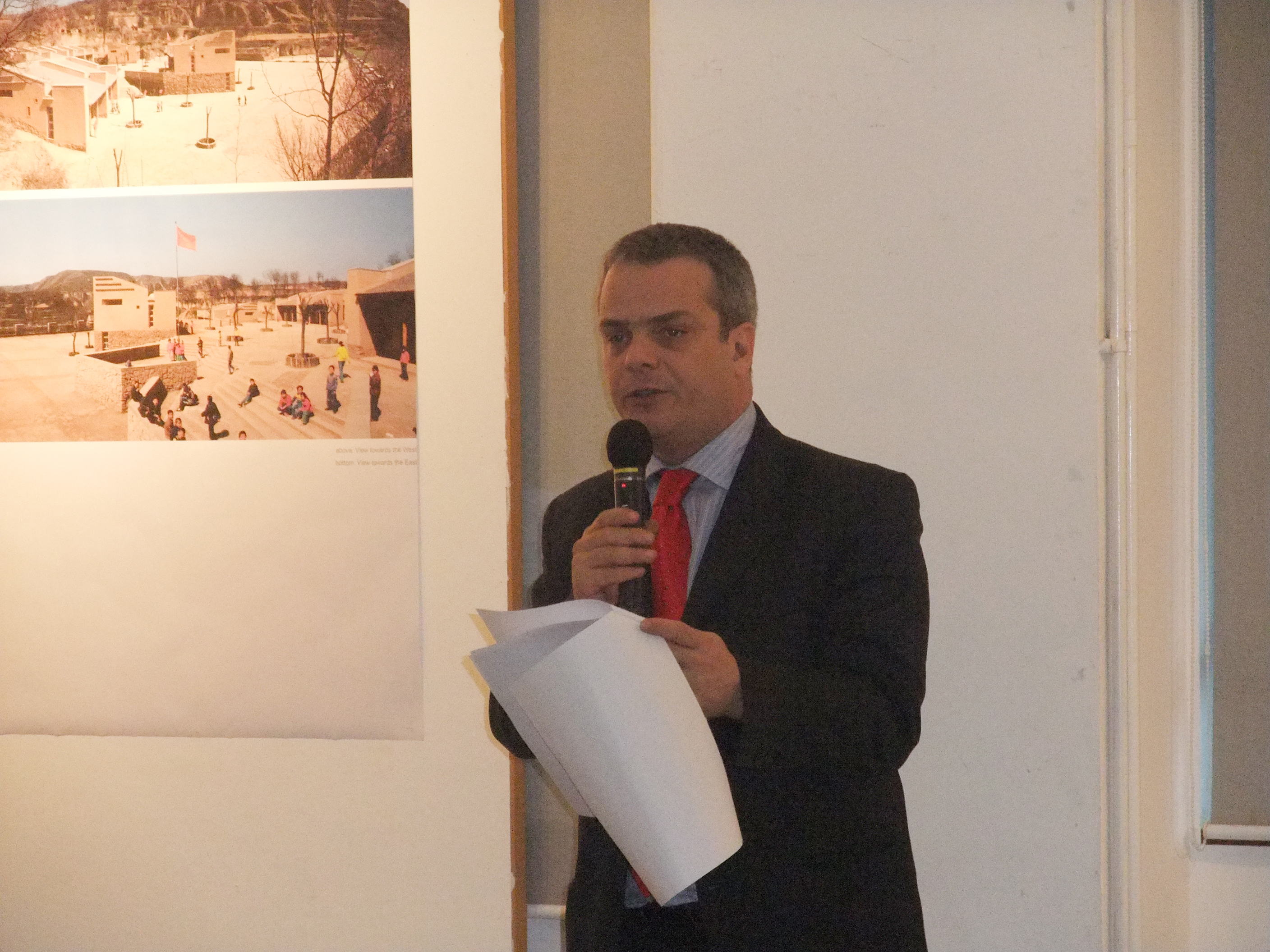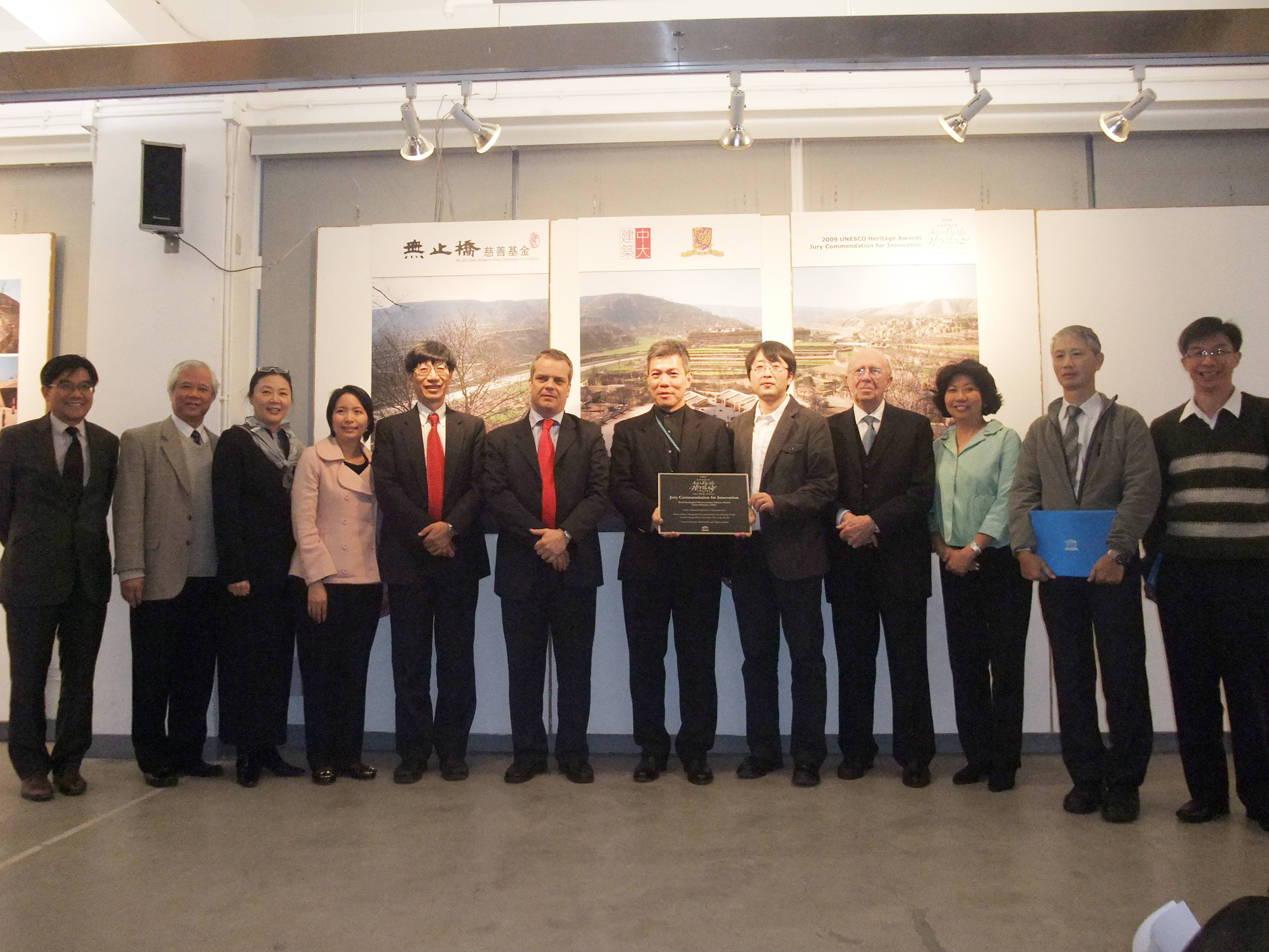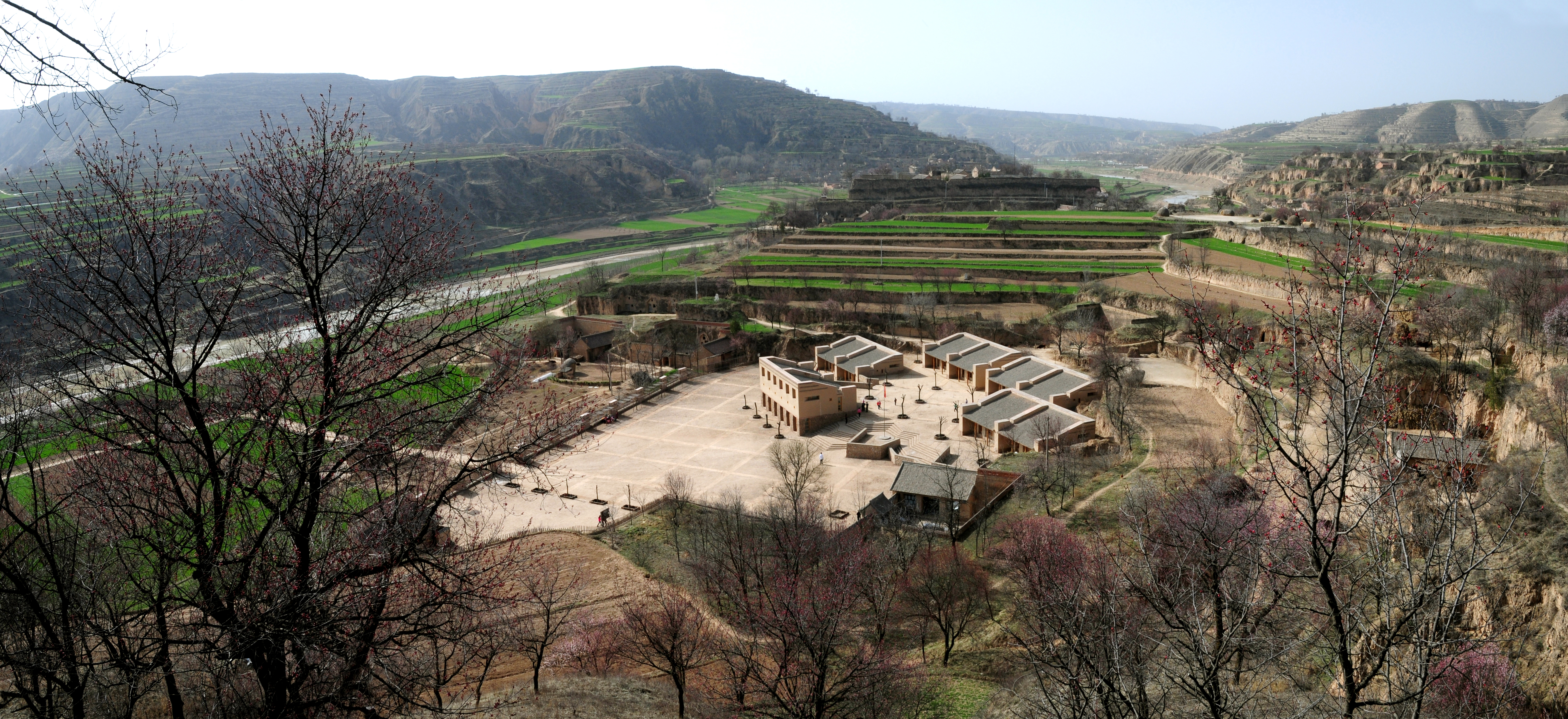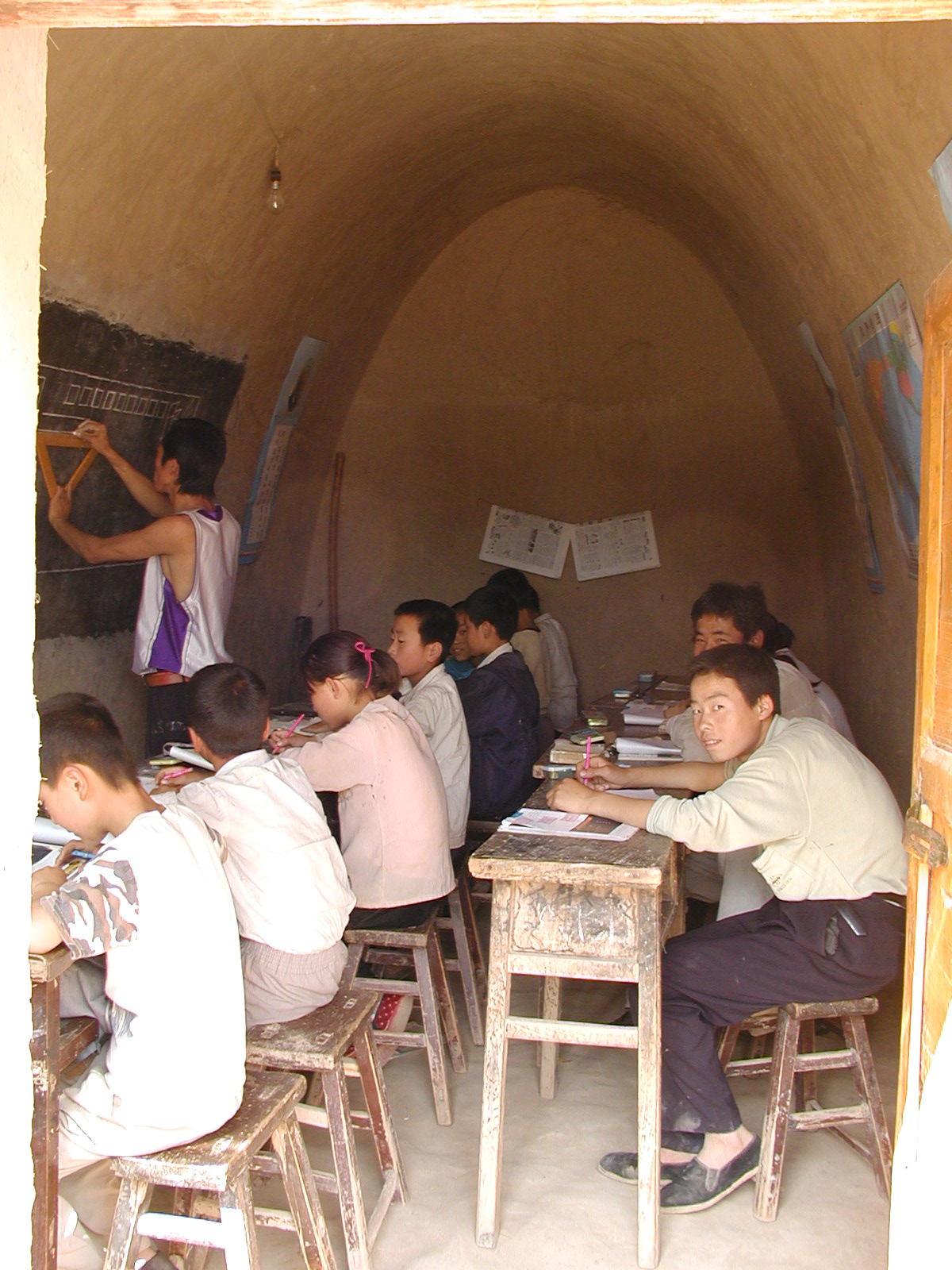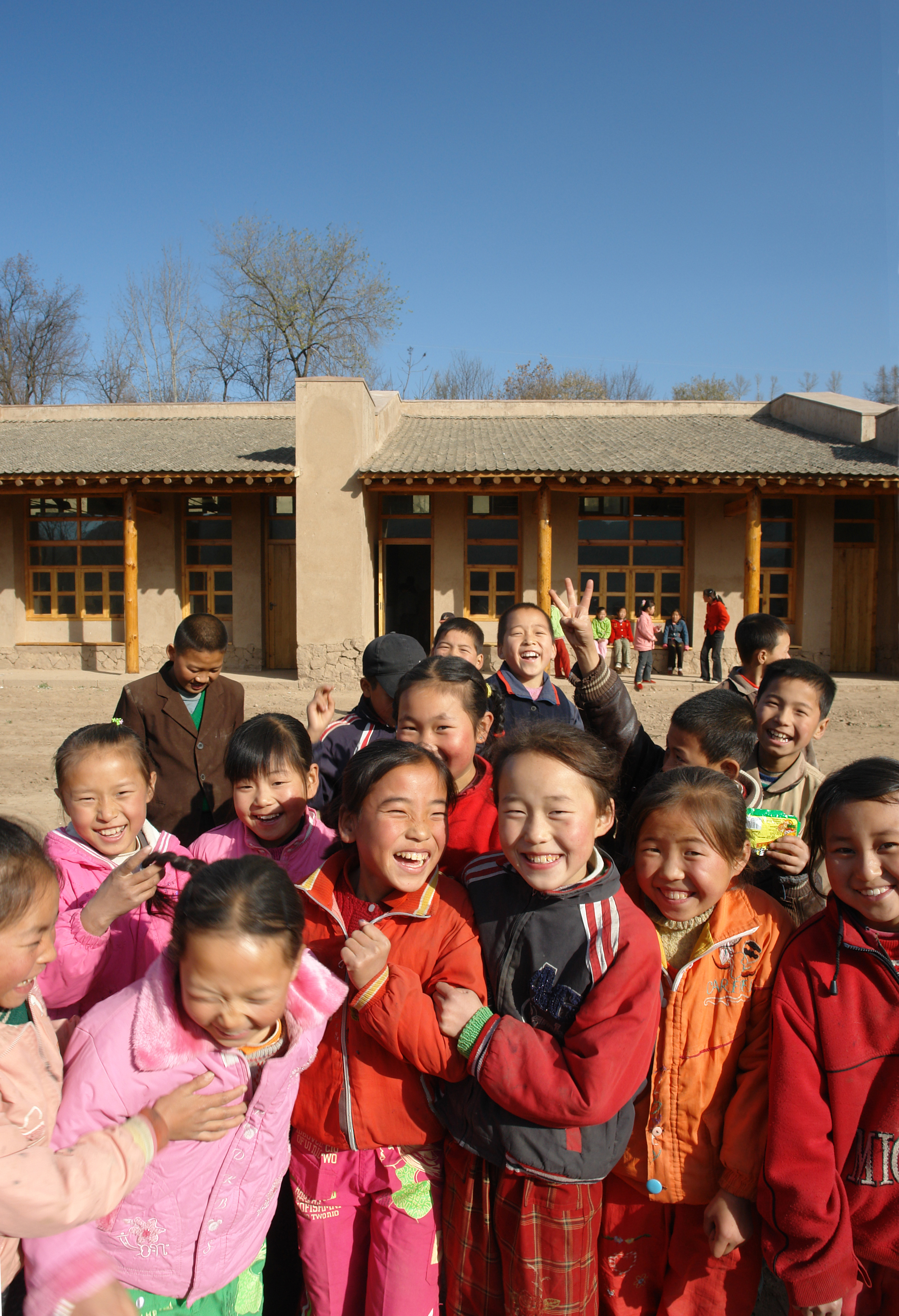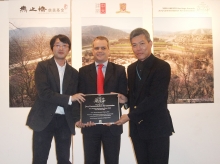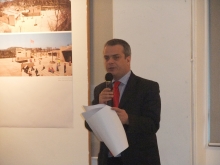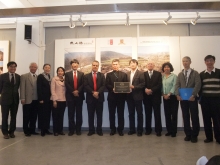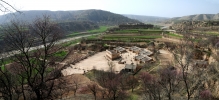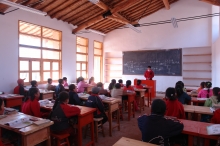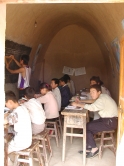CUHK
News Centre
CUHK Ecological School Project Wins Jury Commendation for Innovation at 2009 UNESCO Heritage Awards
The Maosi Ecological Demonstration Primary School designed by a team led by Prof. Edward Ng of the School of Architecture at The Chinese University of Hong Kong (CUHK) received the Jury Commendation for Innovation at the 2009 United Nations Educational, Scientific and Cultural Organization (UNESCO) Asia-Pacific Heritage Awards for Culture Heritage Conservation, the only innovation award presented this year. Dr. Tim Curtis, Head of Culture Unit, UNESCO Bangkok was invited to CUHK campus to present the prize today (20 November). He also shared his views on heritage conservation in Asia with academics and students of the School of Architecture.
The eco-school is a living example of the ‘high science and low technology’ design concept, incorporating design and research based on advanced computational simulation studies. The jury of 10 international conservation experts remarked that, ‘The design of the Maosi Ecological Demonstration Primary School offers an attractive modern and locally-suitable alternative to the existing cave schools. It maintains continuity with long-standing local building traditions, in particular, by adapting the environmentally-sustainable aspects of vernacular earthen architecture. The careful selection of materials and techniques, combining mud brick with modern technology such as double glazing, has allowed the school to minimize its energy consumption. The school complex blends smoothly and fits comfortably into the surrounding landscape. The configuration of the buildings creates a livable space at a human scale that is sensitive to this particular context of the Loess Plateau. Built in cooperation with the local villagers themselves, the project sends a strong message about the relevance of applying traditional wisdom to build in an ecological and socially sustainable manner.’
Dr. Curtis said, ‘This project has made a valuable contribution not only to ensuring the continuity of building traditions within a contemporary context, but indeed, also supports environmental sustainability as well as the cause of education for all. Culture, the environment and education are all building blocks for sustainable human development and UNESCO is mandated to ensure that these three aspects are firmly anchored as an integral part of the international development agenda.’
The school is located in the remote village of Maosi in the Loess Plateau region, Gansu Province, which is characterized by fragile ecological and extreme climatic conditions, a lack of resources, and low levels of economy, education and technology. With about 200 students, the existing schools in the village are either housed in caves or in simple single-storey brick huts. With funding from Hong Kong donors, Professor Ng led a team to carry out the eco-school project in Maosi village in 2002, with the aim of creating a comfortable and desirable campus for children. Professor Ng said, ‘I am delighted to see how my team has successfully charted an advance of architecture through research. As a professor at CUHK, I will fuse the new knowledge into my teaching in order to benefit our students with the latest architectural knowledge.’
The project has also been well-received by the mainland authority. Professor Ng joyously remarked, ‘The Maosi School has recently been adopted by the Ministry of Housing and Urban-Rural Development to serve as a design reference for over 200,000 schools in Gansu. With its successful completion, I hope to drum up public support to help introduce ecological buildings in more villages on the mainland, with an aim to enhancing sustainable development in China.’
Professor Ng is actively involved in the reconstruction works for Sichuan after the earthquake. About 90 per cent of the houses in Ma’an Qiao village in Liangshan Yi Autonomous Prefecture were damaged by the earthquake. With the help of the Bridge to China Charitable Foundation, Professor Ng has built 35 houses using earth and other natural materials. They were proved to be as quake-resistant as concrete houses but cost two-thirds less. Professor Ng has also been appointed an expert team member by the HKSAR government to contribute in the design of the Sichuan Wolong Panda Natural Reserve.
A project excelling in outstanding contemporary architectures, the Maosi School has received a number of international honours, including the 2009 RIBA International Award, Commendation in the learning category of the World Architecture Festival, three awards from the Design for Asia Award (DFA Award) presented in Hong Kong—the DFA Grand Award, the DFA Special Award for Sustainability and the DFA Gold Award. In the first China Architecture Media Award presented in December last year, the project was also awarded with the top prize, the Best Architecture Award.
The UNESCO Asia-Pacific Heritage Awards for Culture Heritage Conservation were established to recognize the achievements of individuals and organizations in the private sector, as well as public-private initiatives, in successfully restoring structures of heritage value in the region. In 2005, UNESCO launched the Heritage Awards Jury Commendation for Innovation to recognize newly-built structures which demonstrate outstanding standards for contemporary architectural design which are well integrated into historic contexts.
A total of 52 entries, from 15 countries in the region, were submitted for the Heritage Conservation Awards programme. The conservation project entries include hotels, offices, cultural institutions, educational institutions, religious sites, public institutions, residential buildings and urban districts.
Dr Tim Curtis, Head of Culture Unit, UNESCO Bangkok (middle) presents the Jury Commendation for Innovation at the 2009 UNESCO Asia-Pacific Heritage Awards for Culture Heritage Conservation to Prof. Edward Ng (right) and Mr. Mu Jun, Ph.D student, School of Architecture, CUHK (left)
Prof. Ho Puay-peng, Director, School of Architecture, CUHK (1st left); Prof. Paul Lee, Dean, Faculty of Social Science, CUHK (2nd left); Prof. Kenneth Young, Pro-Vice-Chancellor, CUHK (5th left); Dr Tim Curtis, Head of Culture Unit, UNESCO Bangkok (6th left); Prof. Edward Ng, Professor, School of Architecture, CUHK (6th right); Mr. Mu Jun, Ph.D student, School of Architecture, CUHK (5th right); Sir David Akers-Jones, Honorary Chairman, Wu Zhi Qiao (Bridge to China) Charitable Foundation (4th right); Miss Leonie Ki, Honorary Secretary, Wu Zhi Qiao (Bridge to China) Charitable Foundation (3rd right); and two donor representatives (1st and 2nd right) posing for a group photo with other guests
The Maosi Ecological Demonstration Primary School is designed to maximise daylight and natural ventilation


